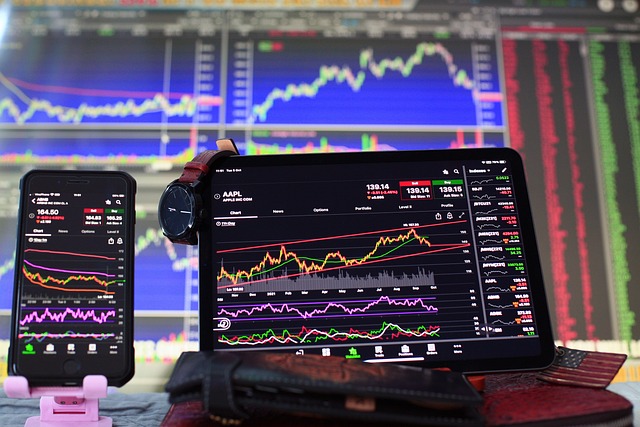The Rise of Trade Bots: Revolutionizing the Trading Landscape
Author: Jameson Richman Expert
Published On: 2024-08-02
Prepared by Jameson Richman and our team of experts with over a decade of experience in cryptocurrency and digital asset analysis. Learn more about us.
In the fast-paced world of finance, the advent of technology has continually shaped how traders operate. Among the innovative tools that have emerged in recent years, trade bots stand out as a transformative force. This article delves into the intricacies of trade bots, exploring their functionality, benefits, challenges, and future potential in the trading ecosystem.

Understanding Trade Bots
At their core, trade bots, also known as trading algorithms or automated trading systems, are software programs designed to execute trades on behalf of users. Utilizing mathematical models and predefined criteria, these bots can analyze market conditions, identify trends, and execute transactions at a speed and efficiency that far exceed human capabilities.
How Trade Bots Work
Trade bots operate using algorithms that process vast amounts of data from various sources, including market prices, historical data, and even social media sentiment. The key functionalities of trade bots include:
- Market Analysis: Trade bots can monitor price movements and patterns, utilizing technical indicators to make informed decisions.
- Order Execution: Once a bot identifies a profitable trading opportunity, it can execute trades almost instantaneously, allowing traders to capitalize on market fluctuations.
- Backtesting: Many trade bots offer backtesting capabilities, enabling traders to test their strategies against historical data before deploying them in live markets.
- Risk Management: Trade bots can incorporate sophisticated risk management strategies, such as setting stop-loss orders, to minimize potential losses.
Types of Trade Bots
There are several types of trade bots, each designed to cater to different trading strategies and goals:
- Market-Making Bots: Designed to provide liquidity, these bots simultaneously place buy and sell orders to receive the spread.
- Arbitrage Bots: These bots exploit price discrepancies between different exchanges, buying low in one market and selling high in another.
- Trend-Following Bots: Using technical indicators, these bots make trades based on the prevailing market trends, aiming to capitalize on upward or downward price movements.
- Forex Bots: Specifically designed for currency trading, forex bots often employ technical analysis to predict price movements.
The Benefits of Using Trade Bots
The growing popularity of trade bots can be attributed to numerous benefits they offer to traders, from novices to seasoned professionals. Some of the key advantages include:
1. Enhanced Efficiency
In the realm of trading, speed can make a significant difference. Trade bots operate around the clock, analyzing data and executing trades within milliseconds. This efficiency allows users to capitalize on market movements that would otherwise be missed during manual trading.
2. Emotional Detachment
Trading can often be an emotionally charged endeavor. Fear and greed can cloud judgment and lead to poor decision-making. Trade bots operate based on logic and predefined parameters, thus removing emotional biases from trading decisions. I believe this is one of the most critical benefits of employing trade bots, as it cultivates a disciplined approach to trading.
3. Data-Driven Decisions
Trade bots leverage vast amounts of data to make informed decisions. By utilizing complex algorithms, these bots can uncover patterns that might be invisible to the human eye. This data-driven approach enhances the likelihood of making profitable trades.
4. Accessibility
Trade bots democratize access to trading opportunities. With an array of platforms offering user-friendly interfaces, even those without extensive trading knowledge can leverage automated solutions to participate in the markets. This accessibility can foster greater participation, which I view as essential for a more vibrant trading community.
Challenges Associated with Trade Bots
Despite their many advantages, trade bots are not without challenges and risks. It’s essential for traders to be aware of these potential downsides before integrating them into their trading strategies.
1. Technical Failures
Like any software, trade bots are susceptible to technical issues that may lead to unexpected results. A bug in the code or a connection issue with an exchange can result in failed trades or significant losses.
2. Market Changes
Markets are dynamic, and strategies that work well in one environment may falter in another. Trade bots need to be regularly updated and recalibrated to adapt to changing market conditions. This requires ongoing oversight and a level of expertise that not all traders possess.
3. Dependency and Over-automation
Relying too heavily on trade bots can lead to a lack of personal engagement with the markets. If traders become overly reliant on automated systems, they risk losing their understanding of market fundamentals and dynamics. Personally, I believe it’s crucial to maintain a balance between utilizing technology and cultivating one’s trading skills.
4. Regulatory Concerns
The use of trade bots raises questions about market manipulation and fairness. As regulatory bodies seek to keep pace with technological advancements, traders must be aware of potential legal implications of using certain types of bots, especially those that engage in high-frequency trading.

The Future of Trade Bots
As technology continues to evolve, the future of trade bots appears promising yet complex. Here are some trends we can expect to see in the coming years:
1. Integration of Artificial Intelligence
The integration of AI and machine learning into trade bots will lead to more sophisticated algorithms capable of adapting to real-time market changes. This level of adaptability could significantly improve trading outcomes, although it also raises the stakes for traders.
2. Greater Accessibility to Retail Traders
As the technology behind trade bots becomes more user-friendly and affordable, we can expect a broader range of retail traders to utilize automated strategies. This democratization of trading technology can lead to more diverse market participation.
3. Enhanced Regulation
With the growing influence of trade bots, regulatory bodies will likely increase scrutiny on automated trading practices. Ensuring fair market conditions while allowing innovation to flourish will be a delicate balance. I believe that strong regulations will ultimately benefit the trading community, fostering trust and integrity.
4. Evolution of Trading Strategies
As trade bots become more advanced, traders will continuously evolve their strategies to stay competitive. The emphasis on data analysis and algorithmic trading will only intensify, driving innovation and profitability in the field.
Conclusion: Embracing the Trade Bot Revolution
In conclusion, trade bots represent a significant advancement in the trading landscape. They offer a myriad of benefits, including efficiency, emotional detachment, and data-driven decision-making. However, they also come with their own set of challenges and risks that traders cannot afford to ignore.
As we move into the future, the continuous evolution of technology will likely redefine the shapes and forms of trading, making it vital for traders to remain adaptive and informed. Personally, I believe that the integration of trade bots into a trader's toolkit, when exercised with caution and understanding, can lead to more successful trading outcomes and a deeper appreciation of market dynamics.
Ultimately, the trade bot revolution is here, and embracing it might just be the key to unlocking new trading heights.